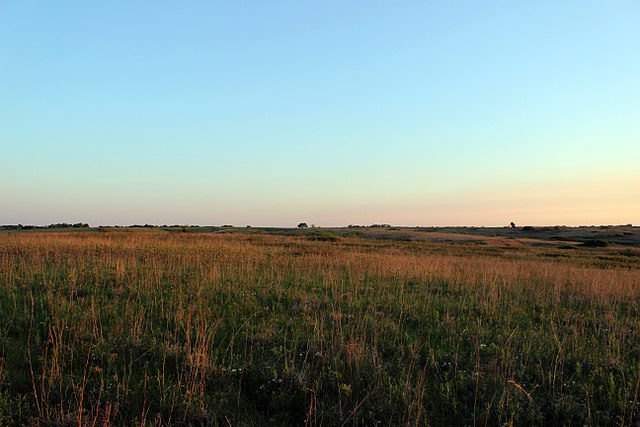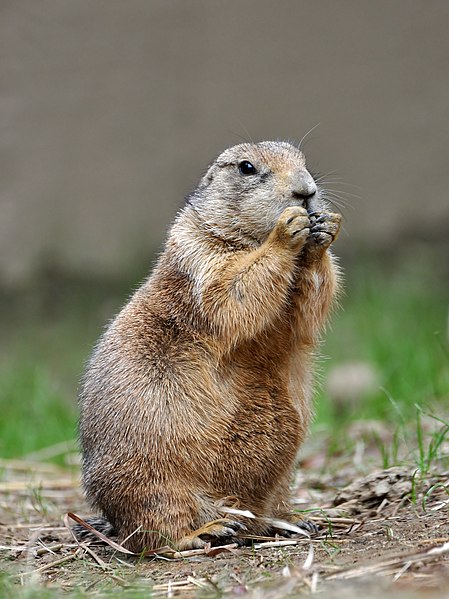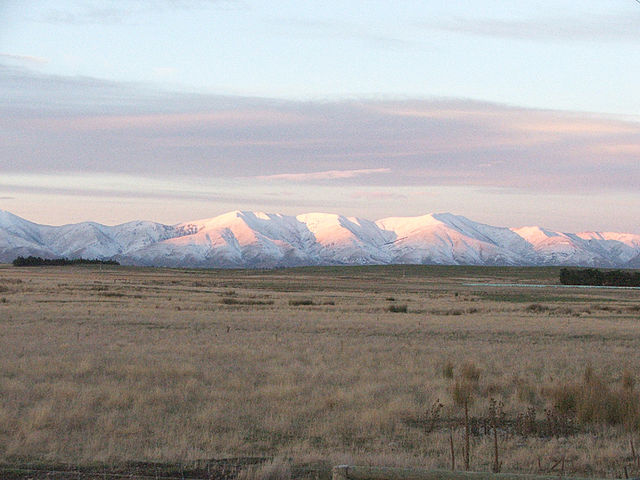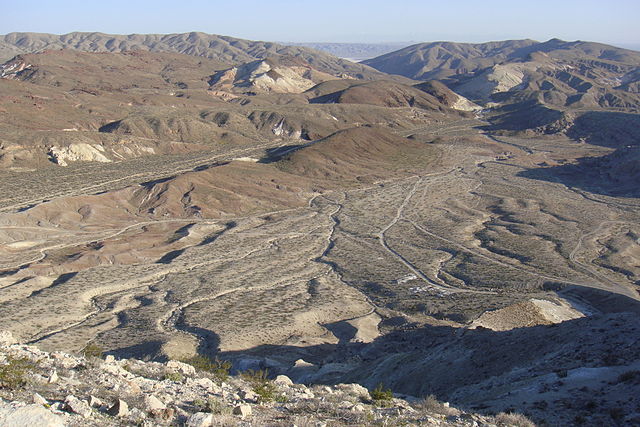The Great Plains, sometimes simply "the Plains", is a broad expanse of flatland in North America. It is located just to the east of the Rocky Mountains, much of it covered in prairie, steppe, and grassland. It is the western part of the Interior Plains, which also include the mixed grass prairie, the tallgrass prairie between the Great Lakes and Appalachian Plateau, and the Taiga Plains and Boreal Plains ecozones in Northern Canada. Great Plains or Western Plains is also used to describe the ecoregion of the Great Plains, or alternatively the western portion of the Great Plains.
A satellite image illustrating the generalized distribution of the Great Plains. The exact boundaries may vary among context or disciplines (e.g. ecology, geology, geopolitical definitions).
Image: Great plains storm Great Sand Dunes National Park
Image: Cole Camp Prairie Sunset (26926713720)
Image: Black Tailed Prairie Dog
In geography, a plain, commonly known as flatland, is a flat expanse of land that generally does not change much in elevation, and is primarily treeless. Plains occur as lowlands along valleys or at the base of mountains, as coastal plains, and as plateaus or uplands. Plains are one of the major landforms on earth, being present on all continents and covering more than one-third of the world's land area. Plains in many areas are important for agriculture. There are various types of plains and biomes on them.
The Kakanui Range dominates the eastern horizon of the Maniototo Plain of New Zealand
Montane plains as seen in Horton Plains in Sri Lanka.
A small, incised alluvial plain from Red Rock Canyon State Park (California).
A flood plain in the Isle of Wight.








